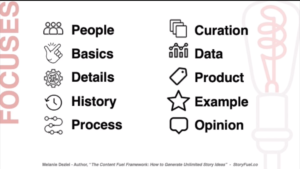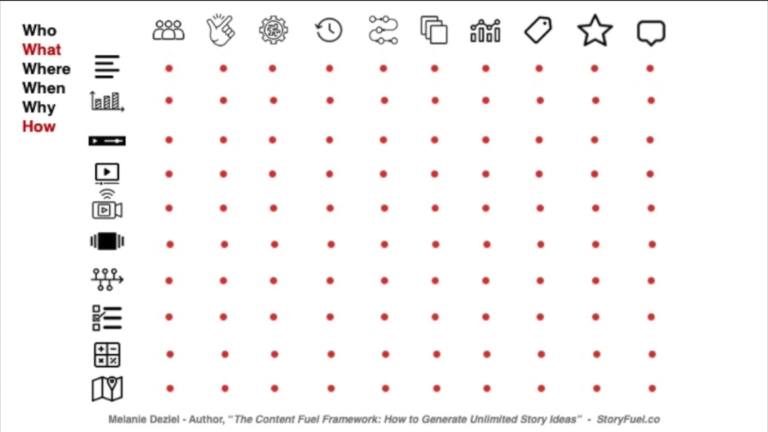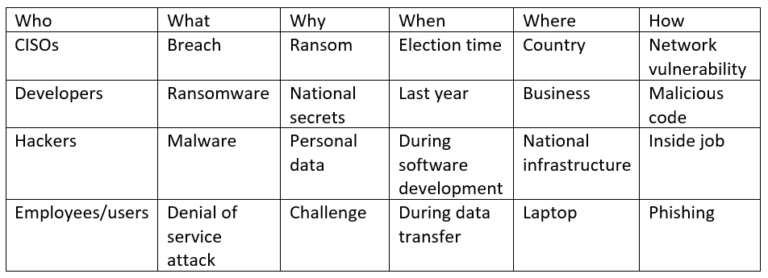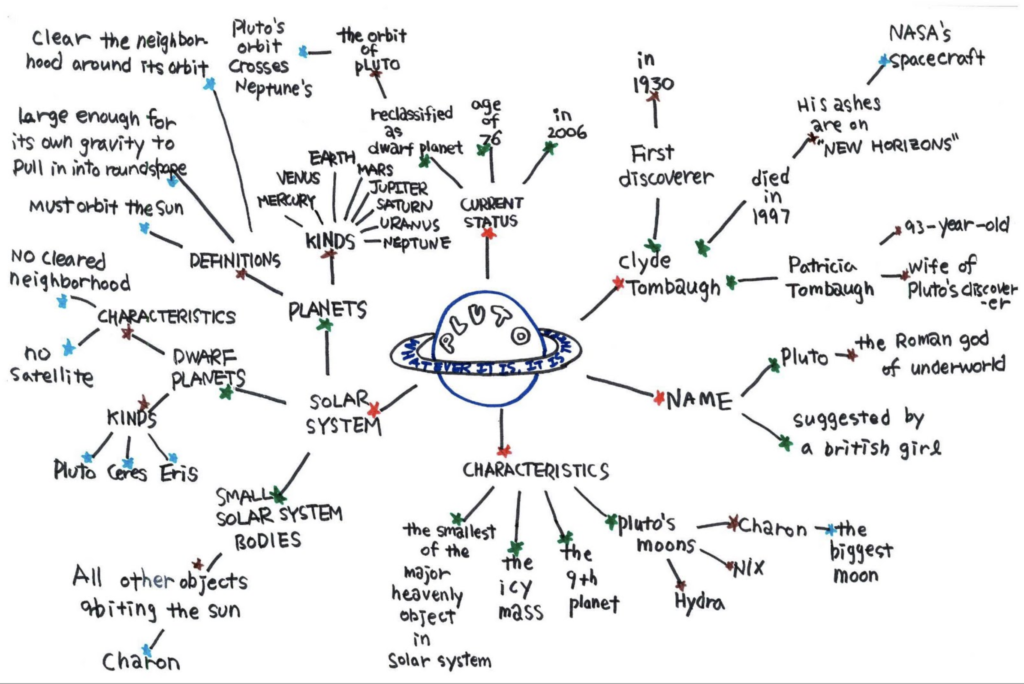Dante had terza rima. Beethoven had symphonic form. The ancient Greek architects had the golden mean. What do they have in common? A set of content rules that allowed them to create The Divine Comedy, the 9th symphony and the Parthenon.
What does this have to do with content ideation?
We Need Rules to Be Creative
You may think it’s counterintuitive, but we can’t be creative without boundaries. If you have no content rules, you have too many options, no place to start and no direction. This was the premise behind the B2B Marketing Exchange session, “How to Generate Unlimited Content Ideas,” presented by Melanie Deziel, director of content at Foundation Marketing and author of The Content Fuel Framework.
Deziel drew on her journalism school education to decode the process she used to come up with ideas quickly and help others do the same. A basic principle journalism school teaches is that you have to answer these six questions: Who, what, where, when, why and how?
Journalists have a set of constraints that lead to story ideas. In her session, she went through the system she developed based on two of these six questions: What and how?
As Deziel described it, you need to place limitations on yourself so you can focus on what matters. She introduced the “what” as focus or message and the “how” as format or how we bring the message to life. With 10 areas of focus and 10 formats, she presented a matrix with 100 possible content ideas.
“What” Determines “When”
You have to start with the “what” when developing content ideas. What are you trying to accomplish? What’s the story you’re trying to tell? If you’ve ever had anyone say, “We need an infographic,” you know what I mean. Working backwards doesn’t work. Here, in a nutshell, are the 10 ways to focus:
- People: Stories and insights
- Basics: Overview, definitions
- Details: In-depth look
- History: Look at the past
- Process: Instructions or steps
- Curated: Items for consideration
- Data: Trends, statistics
- Product: Product or service information
- Example: Case study
- Opinion: A point of view beyond facts

I take these, and other ways to focus, and align them with the stages of the buyer’s journey. While these aren’t hard-and-fast content rules, here’s how I would segment these 10 items:
- Early stage: Basics, data, opinion, people
- Middle stage: History, process, curated
- Late stage: Details, product, example
Then Tackle the “How”
After going through the messages, Deziel presented 10 possible formats: Writing, infographic, audio, video, live video, images and image galleries, timeline, quiz, tool and map.

From here, you can create a matrix of focuses and formats, keeping in mind that the message must drive the format.

Even without a matrix, the message may line up with the format in a self-evident way. Here is an example of a format I might choose for each type of focus:
- Basics: Mixed-media video
- Data: Infographic
- Opinion: Influencer E-book
- People: Day-in-the-life G-book
- History: Podcast
- Process: Best practices guide
- Curated: Checklist
- Details: White paper
- Product: Solution brief
- Example: Case study portfolio
More Than One Way to Brainstorm
The framework Deziel presented is a great way to generate content ideas. I’m certainly going to add it to my set of tools. There are a couple of other ways to brainstorm that I also use. Both focus on the message rather than the format, but, for me, that’s the hard part. Here are a couple of my favorites:
Message matrix. In this framework, I put those six basic journalistic questions across the top of a page: Who, what, when, where, why, how? Then I start filling in the columns for each, based on a topic. I don’t stop writing until a page is filled completely. It doesn’t matter if the ideas are crazy; this is brainstorming. Here’s the start of a possible matrix for the topic of cybersecurity:

Once I’ve created my matrix, I can start looking across categories and matching up topics to see what’s interesting. For example, I could develop a topic around employees (who), laptops (where) and phishing scams (how). Another topic could be ransomware (what) and national infrastructure (where).
Mind map. This is my favorite. This is the “spider web” method where you put a topic in the middle and then start branching out with whatever ideas come to mind. You cluster the branches based on categories.
If you choose chocolate as a topic, for example, you might have branches that focus on type (dark, milk, white), cost, recipes, preferences, where it’s grown, how it’s made, history. Here’s another example of a fleshed-out mind map from WriteShop.

Use Deziel’s six-question matrix or any other framework as a starting point for your own content rules. Whatever works for you is a good framework as long as it helps you focus your ideas. You may not be creating timeless art, but you’ll be creating engaging content that helps you reach your audience and your goals.
If you need more help creating content, check out this recent blog post, Hurry Up! Launch Content Faster!, for tips on making sure those great ideas you came up with turn into real marketing content you can use.

Brenda Caine is a senior content strategist at Content4Demand. She works with B2B clients on content marketing strategy, personas, messaging and ideation; content audits, gap analysis and content mapping; blogs; content development and more. Brenda has a black belt in karate, and when she’s not immersed in technology, you can find her dancing in the ballet studio, lifting weights at the gym or strolling down the avenue in a 1930s dress with a smart hat to match.



